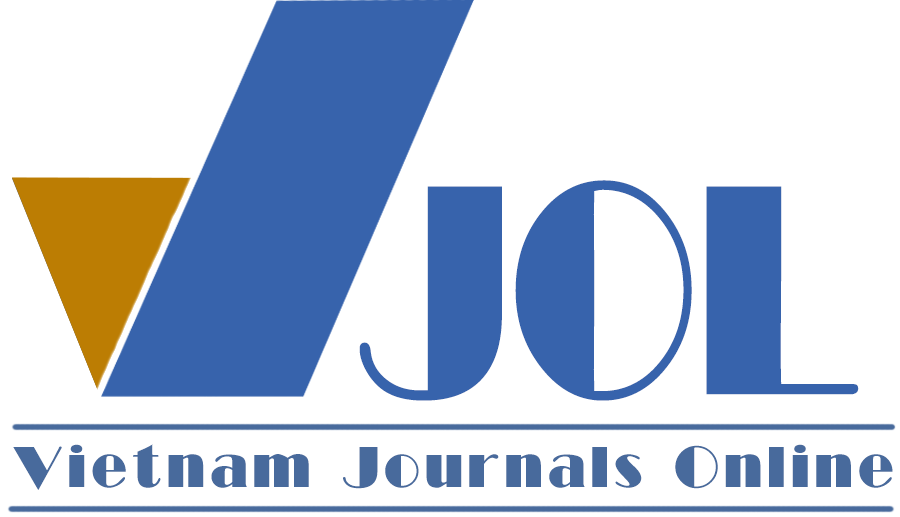Factors affecting core health workforce retention at medical centers under the Hanoi Department of Health
Authors
DOI: https://doi.org/10.57110/jebvn.v3i1.161Keywords:
Retention, core health workforce, medical center, HanoiReferences
Cardy, R. L., Miller, J. S., & Ellis, A. D. (2007). Employee equity: Toward a person-based approach to HRM. Human Resource Management Review, 17(2), 140-151. https://doi.org/10.1016/j.hrmr.2007.03.006
Chew, J., Girardi, A., & Entrekin, L. (2005). Retaining core staff: The impact of human resource practices on organization commitment. Journal of Comparative International Management, 8(2), 23-42. https://doi.org/10.1108/15499130580001062
Chew, J. C. L. (2004). The influence of human resource management practices on the retention of core employees of Australian organisations: An empirical study (Doctoral dissertation). Murdoch University, Perth, Australia.
Das, B. L., & Baruah, M. (2013). Employee retention: A review of literature. IOSR Journal of Business and Management, 14(3), 8-16. https://doi.org/10.9790/487X-1420816
Fornell, C., & Larcker, D. F. (1981). Evaluating structural equation models with unobservable variables and measurement error. Journal of Marketing Research, 18(1), 39-50. https://doi.org/10.1177/002224378101800104
Hair, J. F., Hult, G. T. M., Ringle, C. M., & Sarstedt, M. (2014). Partial least squares structural equation modeling (PLS-SEM): An emerging tool in business research. European Business Review, 26(2), 106-121. https://doi.org/10.1108/EBR-10-2013-0128
Hair, J. F., Sarstedt, M., Ringle, C. M., & Gudergan, S. P. (2019). When to use and how to report the results of PLS-SEM. European Business Review, 31(1), 2-24. https://doi.org/10.1108/EBR-11-2018-0203
Henseler, J., Ringle, C. M., & Sarstedt, M. (2015). A new criterion for assessing discriminant validity in variance-based structural equation modeling. Journal of the Academy of Marketing Science, 43(1), 115-135. https://doi.org/10.1007/s11747-014-0403-8
Herzberg, F., Mausner, B., & Snyderman, B. B. (1959). The motivation to work (2nd ed.). John Wiley & Sons.
Huynh, T. T. S. (2016). Factors affecting human resources maintenance at industrial zones in Ho Chi Minh City. Tra Vinh University Journal of Science, 22, 54-63.
Huynh, T. T. S., & Nguyen, V. D. (2021). Impacts of organizational culture to retention of human resources at Phong Phu International Joint Stock Company. Journal of Finance - Marketing, 66(6), 104-114. https://doi.org/10.1108/JFM-12-2020-0224
Luu, M. V. (2022). Factors impact on employee retention in Vietnamese Enterprises. Journal of Finance - Marketing, 68(2), 92-102. https://doi.org/10.1108/JFM-03-2022-0165
Ngure, K. P., & Waiganjo, E. (2017). Factors influencing retention of health workers in the public health sector in Kenya: A case study of Kenyatta National Hospital. International Journal of Scientific and Research Publications, 7(5), 818-846. https://www.ijsrp.org/research-paper-0517.php
Ringim, K. J., Razalli, M. R., & Hasan, N. A. (2012). A framework of business process re-engineering factors and organizational performance of Nigerian banks. Asian Social Science, 8(4), 203-216. https://doi.org/10.5539/ass.v8n4p203
Schultz, T. W. (1961). Investment in human capital. American Economic Review, 51(1), 1-17. https://www.jstor.org/stable/1818907
Segal, L. M., & Sullivan, D.G. (1997). Temporary services employment durations: Evidence from state UI data work. Federal Reserve Bank of Chicago (Working Paper WP-97-23). https://doi.org/10.2139/ssrn.1295297
Stum, D. L. (1998). Five ingredients for an employee retention formula. HR Focus, 75(9), S9-S10.
Vroom, V. H. (1964). Work and Motivation. John Wiley & Sons.
Downloads
Additional Files
Published
Abstract View
PDF Downloaded
How to Cite
Issue
Section
License
Copyright (c) 2023 Nguyễn Danh Nam

This work is licensed under a Creative Commons Attribution-NonCommercial 4.0 International License.
by VNU Journal of Economics and Business






